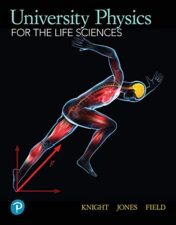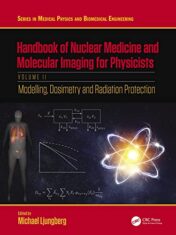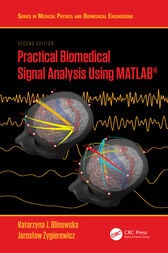Discover the Best Biophysics Books to Expand Your Knowledge
Discover the Latest Biophysics Books at SurgeryBook.net
Are you looking for the latest biophysics books? Look no further than SurgeryBook.net! Our selection of biophysics books is comprehensive and up-to-date, so you can find the perfect book to help you understand the complexities of biophysics. Whether you’re a student, researcher, or professional, our selection of biophysics books will provide you with the knowledge and insight you need to stay ahead of the curve. Plus, our prices are competitive and our customer service is top-notch. So don’t wait any longer – explore our selection of biophysics books today at SurgeryBook.net!
Biophysics Books
Biophysics Books
Practical Biomedical Signal Analysis Using MATLAB® 2021 Original pdf
Biophysics Books
Biophysics Books
Novel Coronavirus 2019 In-silico Vaccine Design and Drug Discovery 2020 Original pdf
Biophysics Books
Biophysics Books
Nanomaterials in Biomedical Application and Biosensors (NAP-2019) 2020 Original pdf
Introduction
Are you looking to expand your knowledge of biophysics? If so, then you've come to the right place! Discover the Best Biophysics Books is here to help you find the perfect book to help you learn more about this fascinating field. We have compiled a list of the top biophysics books available, so you can easily find the one that best suits your needs. Whether you're a beginner or an expert, our selection of biophysics books will provide you with the information and resources you need to further your understanding of this complex subject. So, start exploring today and discover the best biophysics books to expand your knowledge!
Introduction to Biophysics: A Comprehensive Overview
Biophysics is a field of science that combines the principles of biology and physics to study the physical properties of living organisms. It is an interdisciplinary field that applies the laws of physics to understand the behavior of biological systems. Biophysics has become increasingly important in recent years as it provides insight into the structure and function of living organisms, from the molecular level to the cellular level.
Introduction to Biophysics: A Comprehensive Overview is a comprehensive introduction to the field of biophysics. This book provides an overview of the fundamentals of biophysics, including topics such as thermodynamics, kinetics, and statistical mechanics. It also covers the application of these concepts to biological systems, including proteins, nucleic acids, and membranes. The book also discusses the use of biophysical techniques, such as X-ray crystallography, nuclear magnetic resonance spectroscopy, and electron microscopy, to study biological systems.
The book is divided into four sections. The first section provides an overview of the basic principles of biophysics, including thermodynamics, kinetics, and statistical mechanics. The second section focuses on the application of these principles to biological systems, including proteins, nucleic acids, and membranes. The third section covers the use of biophysical techniques to study biological systems, including X-ray crystallography, nuclear magnetic resonance spectroscopy, and electron microscopy. The fourth section provides an overview of the current research in biophysics, including topics such as gene regulation, protein folding, and cell signaling.
This book is an ideal resource for students and researchers interested in learning more about the field of biophysics. It provides a comprehensive overview of the fundamentals of biophysics and its applications to biological systems. It is written in an accessible style and includes numerous illustrations and examples to help readers better understand the material.
Exploring the Intersection of Biology and Physics
Exploring the intersection of biology and physics is an exciting field of research that has the potential to revolutionize our understanding of life. By combining the principles of physics with the study of living organisms, scientists are able to gain a better understanding of how biological systems work and how they interact with their environment.
At its core, this field of research seeks to understand the physical laws that govern the behavior of living things. This includes studying the forces that drive the movement of molecules, cells, and organisms, as well as the energy exchanges that occur between them. By understanding these physical laws, researchers can develop new ways to manipulate and control biological systems.
In addition to exploring the physical laws that govern biological systems, researchers in this field also seek to understand the chemical processes that take place within living organisms. This includes studying the structure and function of proteins, enzymes, and other molecules, as well as the interactions between them. By understanding these chemical processes, researchers can develop new treatments for diseases and other medical conditions.
The field of exploring the intersection of biology and physics is also closely related to the study of biophysics. Biophysics is the study of the physical properties of biological systems, such as the structure and function of proteins, enzymes, and other molecules. By understanding the physical properties of these molecules, researchers can develop new ways to manipulate and control them.
Finally, exploring the intersection of biology and physics also involves the study of the evolution of living organisms. By studying the evolutionary history of different species, researchers can gain insight into how different organisms have adapted to their environment over time. This knowledge can then be used to develop new treatments for diseases and other medical conditions.
Overall, exploring the intersection of biology and physics is an exciting field of research that has the potential to revolutionize our understanding of life. By combining the principles of physics with the study of living organisms, researchers can gain a better understanding of how biological systems work and how they interact with their environment. This knowledge can then be used to develop new treatments for diseases and other medical conditions.
The Role of Mathematics in Biophysics
Biophysics is a field of science that combines the principles of physics and biology to study the physical properties of biological systems. Mathematics plays an essential role in biophysics, as it provides the tools necessary to analyze and interpret data from experiments. Mathematical models are used to describe the behavior of biological systems, and mathematical techniques are used to analyze the data obtained from experiments.
Mathematics is used to model the behavior of biological systems at all levels, from the molecular level to the cellular level to the organismal level. At the molecular level, mathematics is used to model the interactions between molecules, such as proteins and DNA. At the cellular level, mathematics is used to model the behavior of cells, such as their growth and division. At the organismal level, mathematics is used to model the behavior of organisms, such as their movement and behavior.
Mathematical models are also used to predict the behavior of biological systems. For example, mathematical models can be used to predict how a particular drug will interact with a particular protein or how a particular gene will affect the development of an organism. Mathematical models can also be used to predict the effects of environmental factors on biological systems, such as the effects of climate change on species populations.
In addition to modeling the behavior of biological systems, mathematics is also used to analyze the data obtained from experiments. Mathematical techniques such as statistics, probability, and calculus are used to analyze the data and draw conclusions about the behavior of biological systems. For example, statistical methods can be used to determine the significance of differences between experimental results and control results. Probability can be used to determine the likelihood of certain outcomes occurring. Calculus can be used to calculate the rate of change of a particular variable over time.
Overall, mathematics plays an essential role in biophysics. It provides the tools necessary to model and analyze the behavior of biological systems, and it is used to draw conclusions about the behavior of biological systems. Without mathematics, biophysics would not be able to make the advances it has made in recent years.






























